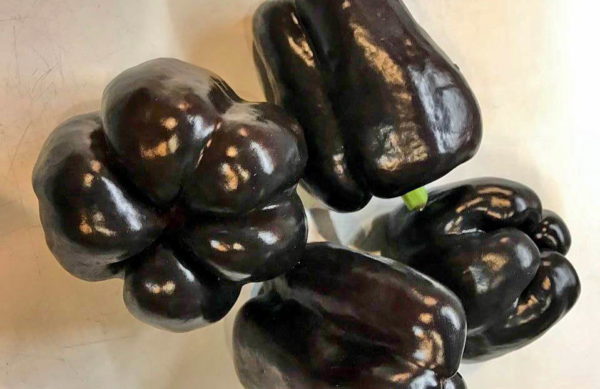
For many, black pepper varieties are associated with aromatic spice, but not like the usual bell pepper. Yes, such exist, and with a rather unusual coloring.Everything that is known about black pepper varieties is written here with a photo, in this article. Experienced gardeners know about them, but not everyone decides to grow them in their garden. But they are grown as simple as any other species.
Content
Description and characteristics of black pepper
Fruits are two or three nesting hollow polyspermous berries having a thick wall, completely covered with seeds. In the latter there are seedlings, inside of which there are many small, flat-shaped seeds.
The leaves of black peppers can be short or long, “gathered” in a bouquet or single. Colors range from green to black and green. The fruits themselves are quite large, single. In rare cases, grow in bunches, yellow at the base, corollas are either white or green.
Properties
Using black pepper, it is quite possible to significantly improve the digestive system and increase appetite. In folk medicine, infusions, decoctions, extracts for the treatment of viral diseases are prepared from them.
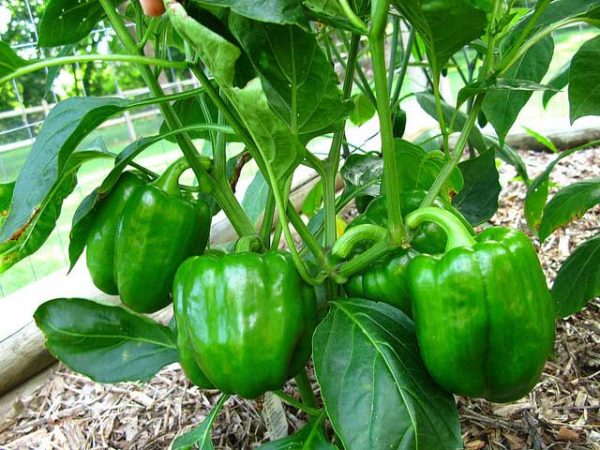
There are many useful elements in the fruits, especially vitamin C. There is also capsaicin, which determines the pungency of taste. Properly prepared pepper tincture will help cope with dysbiosis, achilia and gastritis. And thanks to liniment, a vegetable is often added to pharmacy ointments.
Black varieties of peppers
Below is a description of the best black varieties of pepper. Each of them is worth attention.
Black sugar
This vegetable variety belongs to the category of Bulgarian. It is a very early hybrid, matures 100-110 days after germination. It grows equally well both in open ground and in a greenhouse.
The bush grows to 0.8 m, the shape of the fruit is conical with a sharp tip, the weight is about 90 g. The colors are dark, can vary from purple to cherry. The fruit tastes quite sweet and juicy. If grown in a greenhouse, you can get a crop of about 7 kg per square meter.
Purple bell
It is also an early hybrid, matures already a maximum of 85 days after germination. It adapts well in open ground, one bush grows to about 80 cm, no more. The purple bell pepper is rather large, has a shape close to a cube and weighs about 170 g. The wall thickness is not more than 7 mm. Resistant to most diseases, such as the potato virus and tobacco mosaic.
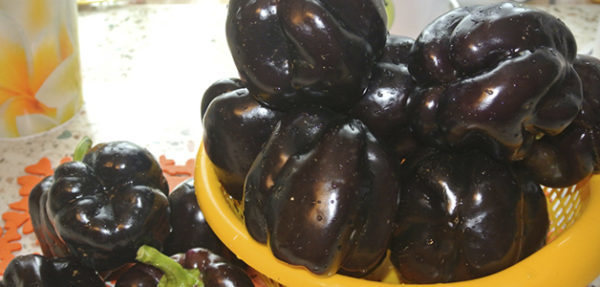
Black horse
Like the 2 previous hybrids, it belongs to the early ones; after germination, it ripens in 90-100 days. He feels the same under the film and in the garden. A mature bush is quite tall, it yields about 15 fruits per crop, which is why he needs a garter on a support.
One ripened fruit can weigh up to 250 g, the walls reach a thickness of up to 1 cm, and the color varies from dark purple to dark red. Black Horse variety pepper is very juicy, has a sweetish flavor. Resistant to adverse conditions, viral infections. With only 1 square meter, you can get up to 7.5 kg.
Bagheera
This variety is worth such a beautiful name. Each of its fruits, when ripe, reaches a mass of 350 g. The color changes over time from black-chocolate to red-chocolate.
Refers to early hybrids. The bushes grow to about 50 cm. It can grow both in the garden and in the greenhouse.
Mulatto
Mid-season hybrid, matures in about 130 days. More suitable for growing in greenhouses. The bush reaches an average height, quite sprawling. The fruits are similar in shape to an elongated cube, weigh about 170 g, and their wall thickness does not exceed 7 mm. There is a glossy gloss on the surface. This variety has a bright pepper aroma, it normally tolerates minor changes in temperature.
Sweet chocolate
The variety is characterized by late ripeness (about 135 days) and the fact that it was bred by Siberian breeders. It grows to 80 cm in height, has the shape of an elongated pyramid, and weighs up to 125 g. At the beginning of ripening, it has a dark green hue, and gradually turns into chocolate. Interestingly, inside it is completely red.
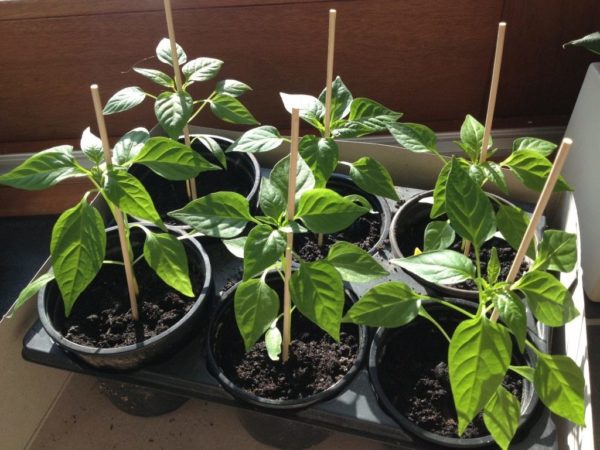
It can be grown both in the garden and in the greenhouse. Unlike others, it has good immunity to all pepper viruses.
Black cardinal
Mid-ripening variety, ripens 120 days after sunrise. Reaches 60 cm in height. When ripe, it smoothly transitions from black to bright red in color, similar in shape to a truncated pyramid. It tastes very sweet, juicy. It gives a large crop, with only 1 square meter you can get up to 10 kg.
Gypsy baron
The bush grows to 50 cm, has beautiful green leaves and flowers with a purple tint. This variety of black pepper differs from the rest in the small fruit size (maximum 8 cm in length). At the beginning of ripening, the fruit has a blue color, gradually turning to dark purple and then black. Good yield - approximately 8 kg per square meter. m
In fully ripened peppers, the surface is pearlescent. By the way, Gypsy Baron pepper grows with its tips upward and from the side looks like a beautiful bouquet. Look very appetizing in the blanks for the winter.
Rules for growing black pepper
Seeds should be started to be sown from mid-February, but if it was not possible, it can be transferred until the first days of the spring month. Harvested land must be put in a warm room, wait until it warms up. Next, loosen and pour water, preferably warm. Sow the seeds in a container with prepared soil and cover with a film on top, leave it until the seeds germinate.
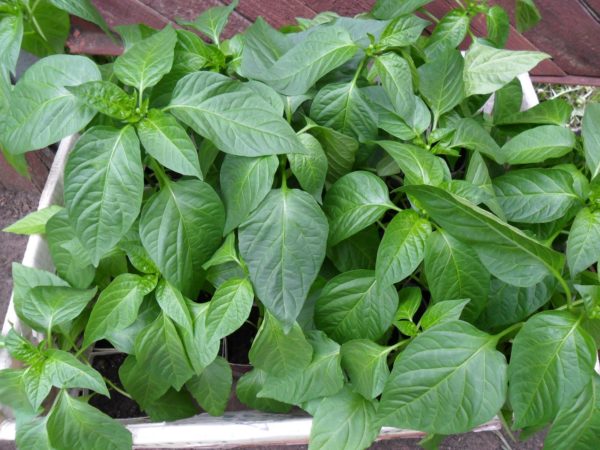
If you follow the advice above, even seeds of 3 years ago will sprout. By the tenth day, one can expect the emergence of friendly shoots. In no case can the containers be placed on the battery, otherwise the earth will dry out and the shoots will die. You can keep it near the battery to create the necessary temperature conditions.
As soon as the seedlings become mass, it will be necessary to lower the temperature. To do this, you will have to take the containers into the greenhouse, where the temperature will hold +15 C. So the seedlings are well tempered. Next, you should increase the degree to +25 C.
After the appearance of several leaves, peek seedlings using peat pots. At the beginning of the process, water the earth so that when removing it does not damage the seedlings, pulling them along with the roots.
At this stage, fertilizing with complex fertilizer is needed. It is necessary to check for the absence of various pests (moth, aphid, spider mite). If detected, carry out treatment immediately.
With strict observance of the rules, after 2 months the seedlings will already be about 25 cm high, on each bush there are 12 beautiful leaves, strong stems.
As soon as the weather gets warmer, it is time to plant seedlings in the ground so that the soil has time to warm up well. Yes, in this process, it must be remembered that there should be a distance of about 35-45 cm between the germs.
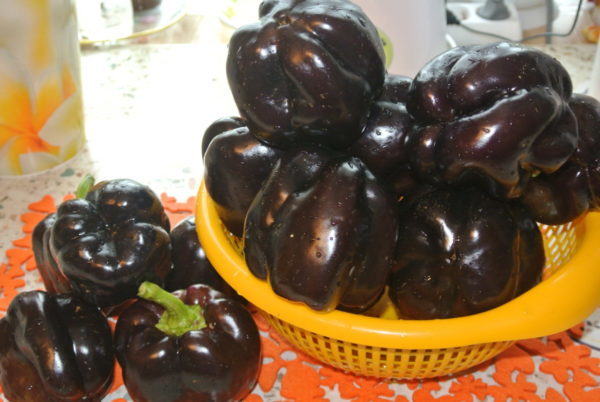
After the peppers take root, fertilize in the form of urea and complex fertilizers. Do this 2 times per season.
Reviews
Tatyana, 48 years old:
“I cultivated the Black Sugar variety. As for me, it is very good, but when heat-treated it changes its beautiful color to brown. And fresh - juicy and sweet, serves as a table decoration. Its yield is the same as that of the usual varieties. He sowed it again this year. ”
Galina, 52 years old:
“Last year I planted the Black Horse variety. Frankly: the ripened fruit was very disappointed. There are no promised thick walls, a solid peel, and the taste is grass, no more. The only plus is the beautiful color. I’ll not risk planting more. ”
Alexey, 46 years old:
“I bought the Purple Bell last February. Seeds are inexpensive. For testing, first planted 5 seeds. And they all sprouted in just 1 week. This variety was surprising in its resistance to weather changes than ordinary bell peppers do not have. ”
Fruits after 70 days were large, fleshy and had a dark red color. In cooking, they are simply gorgeous. Its unusual color not only decorates any dish, but also gives it a special taste.




 Calorie pepper stuffed with meat and rice - BZHU per 100 grams
Calorie pepper stuffed with meat and rice - BZHU per 100 grams Gorky pepper - the best varieties for open ground
Gorky pepper - the best varieties for open ground Hot pepper seeds - the best varieties for open ground and reviews
Hot pepper seeds - the best varieties for open ground and reviews Capsicum tincture for hair - how to use and reviews
Capsicum tincture for hair - how to use and reviews